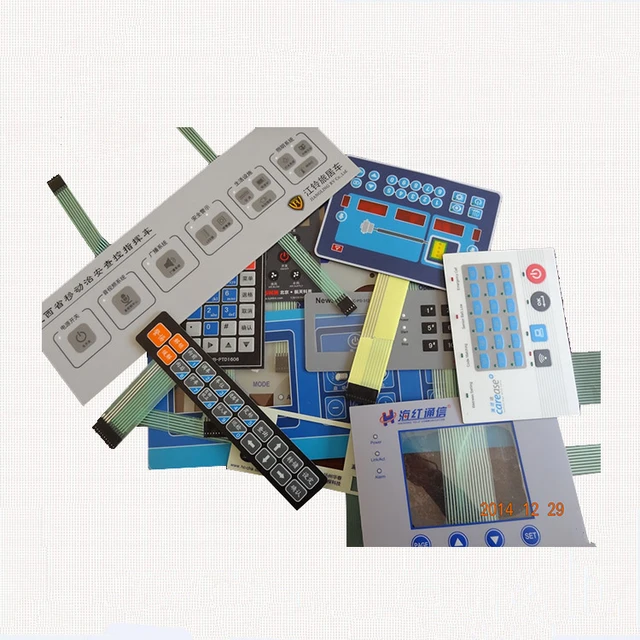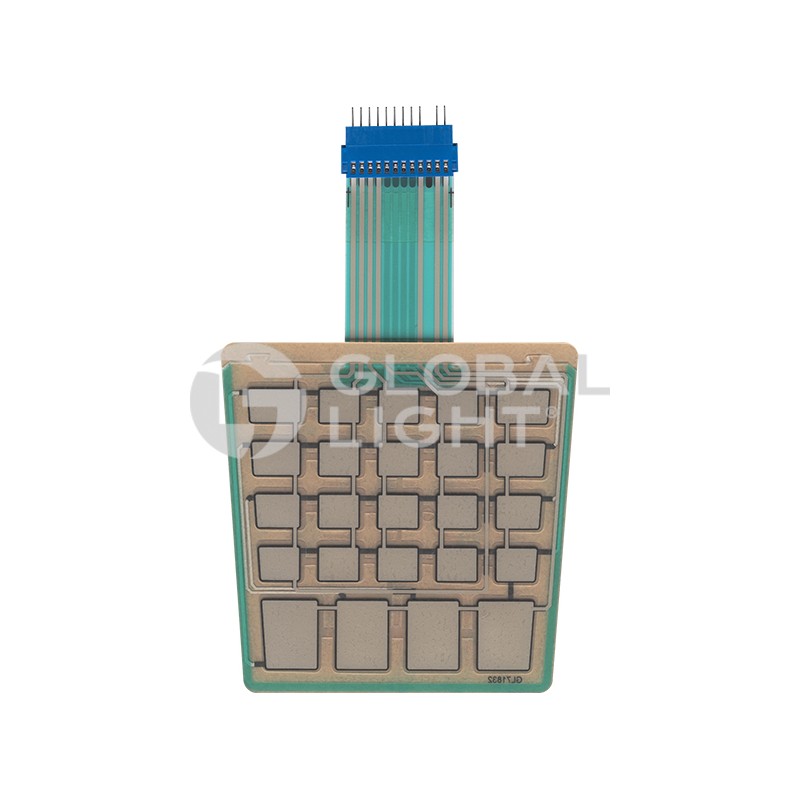Understanding Membrane Layer Switches: The Secret to Reputable and durable Controls

What Are Membrane Switches?
Membrane buttons are a sophisticated remedy in the realm of user interface modern technology, combining functionality and design effortlessly. These gadgets offer as a user interface in between customers and digital systems, incorporating numerous components into a compact format. Usually built from versatile, slim layers of materials, membrane switches are developed to respond to touch, enabling users to communicate with machinery and electronic devices effectively.
The key components of a membrane layer button include a printed circuit layer, graphic overlay, and a spacer layer that stops unintentional activation. The graphic overlay can be customized to mirror brand name identification or user choices, boosting aesthetics while ensuring use. Membrane layer switches are commonly utilized in numerous applications, including medical tools, customer electronics, and industrial tools, owing to their longevity and resistance to ecological elements such as moisture and dirt.
One of the key benefits of membrane buttons is their capability to stand up to wear and tear, making them ideal for high-traffic settings. Furthermore, they are light-weight and need minimal room, enabling for innovative layouts in product growth. Generally, membrane switches over represent a sensible and effective option for contemporary electronic interfaces, marrying modern technology with user-centric style principles.
Exactly How Membrane Layer Changes Job
The operation of membrane layer switches depend upon an easy yet reliable mechanism that converts user input into digital signals. These switches consist of numerous layers, normally including a graphic overlay, a spacer layer, and a circuit layer. When a customer presses the switch, the top layer flaws, allowing a conductive aspect in the circuit layer to make call with a corresponding conductive pad on the bottom of the visuals overlay. This contact closes the circuit and sends out a digital signal to the device, suggesting that the button has actually been activated.
The layout of membrane switches can vary, but they commonly include domes or responsive elements to offer comments to the individual, improving the total experience - membrane switch. The products made use of in membrane layer buttons, such as polyester or polycarbonate, add to their resilience and resistance to environmental aspects, consisting of wetness and dirt. The published circuits are commonly enveloped, which shields them from wear and tear over time.
Advantages of Membrane Layer Switches

Furthermore, membrane switches are understood for their longevity. Constructed from robust materials, they are resistant to dust, moisture, and physical wear, which considerably prolongs their life expectancy compared to standard mechanical switches. This sturdiness makes them especially appropriate for high-traffic atmospheres and applications needing durability.
One more considerable benefit is the ease of cleaning and upkeep. The smooth surface area go to my site of membrane layer changes lessens dust accumulation and is frequently unsusceptible spills, making them perfect for settings that call for constant sanitization.
Additionally, membrane layer switches offer a streamlined account, bring about a thinner layout that can be integrated into numerous tools without adding bulk. This attribute not just improves the aesthetic appeal yet likewise contributes to a more ergonomic item layout.
Applications of Membrane Switches
Easy to use and versatile, membrane layer buttons discover applications throughout a vast array of industries, consisting of medical tools, customer electronics, and commercial equipment. In the clinical field, these buttons are important to devices such as analysis equipment, person tracking go right here systems, and mixture pumps, where dependability and ease of cleansing are crucial. Their capacity to endure rough atmospheres and maintain performance makes them suitable for such applications.

In customer electronic devices, membrane layer buttons are used in products like microwaves, washing equipments, and remote controls - membrane switch. Their sleek style enables for user-friendly interface, improving the overall user experience while supplying resilience and resistance to put on and tear
Industrial devices additionally gains from membrane switches, especially in control panels for equipment and automation systems. These buttons provide security versus dirt and dampness, guaranteeing regular performance in challenging atmospheres. Moreover, their personalized attributes allow producers to tailor them to certain functional demands, boosting performance and capability.
Picking the Right Membrane Layer Change
When picking a membrane layer switch, it is important to think about different aspects that influence performance and suitability for specific applications. The key factors to consider consist of ecological conditions, tactile feedback, resilience, and design requirements.
First, analyze the operating setting; switches exposed to moisture, chemicals, or severe temperatures require specific products to make sure durability and functionality. Next off, examine the need for tactile responses. Depending upon user communication, some applications might benefit from a responsive action to confirm activation, while others might like a non-tactile design for visual reasons.
Resilience is an additional important variable; membrane switches should be developed to withstand constant use, influences, and abrasion. Make certain the selected button can withstand the anticipated lifecycle, especially in high-usage scenarios.

Final Thought
Finally, membrane layer changes serve as important parts in the style of reliable and long lasting control systems across numerous markets. Their compact style, combined with durable building and personalized functions, enhances individual interaction while making sure longevity sought after environments. The convenience of membrane switches over allows for customized solutions that satisfy specific functional demands, strengthening their value in contemporary innovation. Web Site As industries continue to advance, the significance of incorporating effective membrane layer button solutions can not be overemphasized.
Membrane layer switches over represent a vital element of modern-day user interface layout, mixing functionality with resilience in various applications.Membrane switches are an advanced option in the realm of individual interface innovation, incorporating capability and layout flawlessly. Typically constructed from flexible, thin layers of materials, membrane layer buttons are made to react to touch, making it possible for customers to connect with equipment and digital gadgets efficiently.
The style of membrane switches can differ, yet they usually include domes or responsive aspects to give feedback to the user, enhancing the total experience.In verdict, membrane layer switches over offer as crucial components in the layout of sturdy and trusted control systems across various sectors.